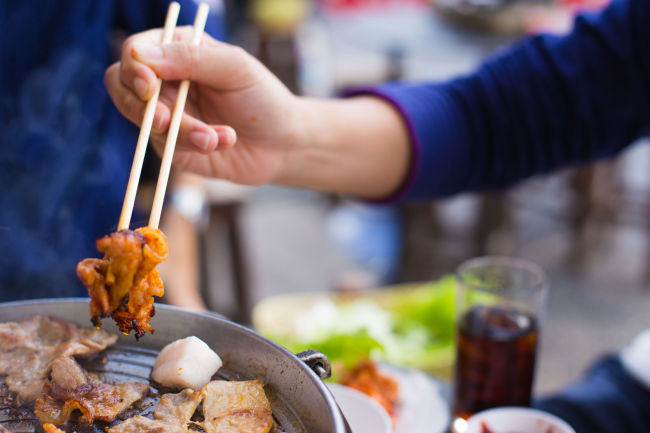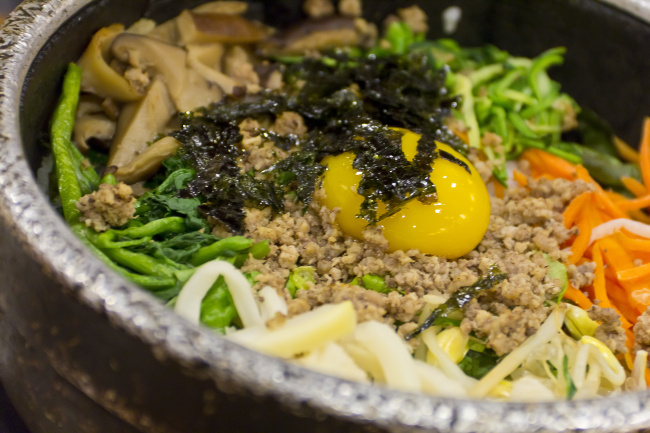Foreign visitors to Korea rated Korean cuisine as average, a public survey showed Monday, putting a damper on the government’s campaign to expand “hallyu” with Korean food culture.
According to the Korea Culture and Tourism Institute, foreign visitors gave 74.44 out of 100 points to the taste of local food. The poll was conducted on 810 foreigners who visited last year, with over half being from Asian countries, the state-run organization said.
According to the Korea Culture and Tourism Institute, foreign visitors gave 74.44 out of 100 points to the taste of local food. The poll was conducted on 810 foreigners who visited last year, with over half being from Asian countries, the state-run organization said.


American visitors rated Korean food the highest at 82.44, followed by Japanese and Europeans at 78.54 and 77.82, the report said.
Chinese visitors, who made up the largest percentage of respondents, graded Korean cuisine the lowest at 70.
“While American or Janapese people tend to visit here as free travel, many Chinese tourists come through agency-led travel packages, having limited options to explore the cuisine, thereby eating at restaurants where the quality is not guaranteed,” said the KCTI’s research fellow Kwon Tae-il. “But the figure of 70 cannot be said to be seriously low.”
Tourists loved bibimbap the most at around 35 percent, followed by bulgogi at 33 percent. Samgyeop-sal, grilled pork belly, took the third spot at 30 percent.
Travelers’ favorite food differed by nationality. While Japanese visitors loved galbi, or ribs, and Chinese preferred samgyeop-sal, Westerners from European countries or the U.S. enjoyed bulgogi the most, the survey revealed.
Tourists disliked grilled fish the most, followed by cold noodles and rice soup. Traditional stews such as doenjang jjigae, made with soybean paste, and kimchi jjigae were also rated as unsatisfactory, it added.
When choosing a restaurant during their travels, foreign visitors considered the taste as the most important factor, at 81 percent. The freshness of ingredients, menu diversity and service quality were also regarded as essential in their decision-making.
Respondents of the survey comprised 350 Chinese, 126 Japanese and 190 visitors from other Asian countries. Around 60 Americans, 43 Europeans and 41 people from other nations also took part in the survey.
By Lee Hyun-jeong (rene@heraldcorp.com)









![[Weekender] Korean psyche untangled: Musok](http://res.heraldm.com/phpwas/restmb_idxmake.php?idx=644&simg=/content/image/2024/05/02/20240502050841_0.jpg&u=)







![[Eye Interview] 'If you live to 100, you might as well be happy,' says 88-year-old bestselling essayist](http://res.heraldm.com/phpwas/restmb_idxmake.php?idx=652&simg=/content/image/2024/05/03/20240503050674_0.jpg&u=)
